Tom's Guide Verdict
Old-school Castlevania fans should pick up Bloodstained: Ritual of the Night right away. So should anyone with an interest in Metroidvanias, action/RPGs or high-quality side-scrollers in general.
Pros
- +
Tight, satisfying gameplay
- +
Beautiful visuals
- +
Catchy music
- +
Memorable characters
Cons
- -
Staid storytelling
- -
Crafting and side quests can get tedious
Why you can trust Tom's Guide
It's hard to believe, but we've been waiting for Bloodstained: Ritual of the Night ($40; PC, PS4, Xbox One, Switch) for more than four years. Back in May 2015, classic Castlevania dev Koji Igarashi requested $500,000 for the game on Kickstarter, betting that there were a few diehard fans who still wanted an old-school Metroidvania/horror/RPG experience.
The Kickstarter earned more than $1.5 million in its first day, and ended up with more than $5.5 million.
The game was supposed to come out in March 2017, but with more money came more features, and with more features came more development time. Fans started to wonder: Would Bloodstained be a nostalgic throwback, or an overstuffed mess?
Fans can rest easy, as it's definitely the former. Bloodstained is almost defiantly old-school: a straightforward action/exploration experience that pretty much just sets you free to explore as soon as the first level is over. There's no tutorial, there are few concessions to modern Metroidvania design and there is a lot of expository dialogue. If Castlevania: Symphony of the Night had much better graphics and a full voice cast, it would play a lot like Bloodstained.
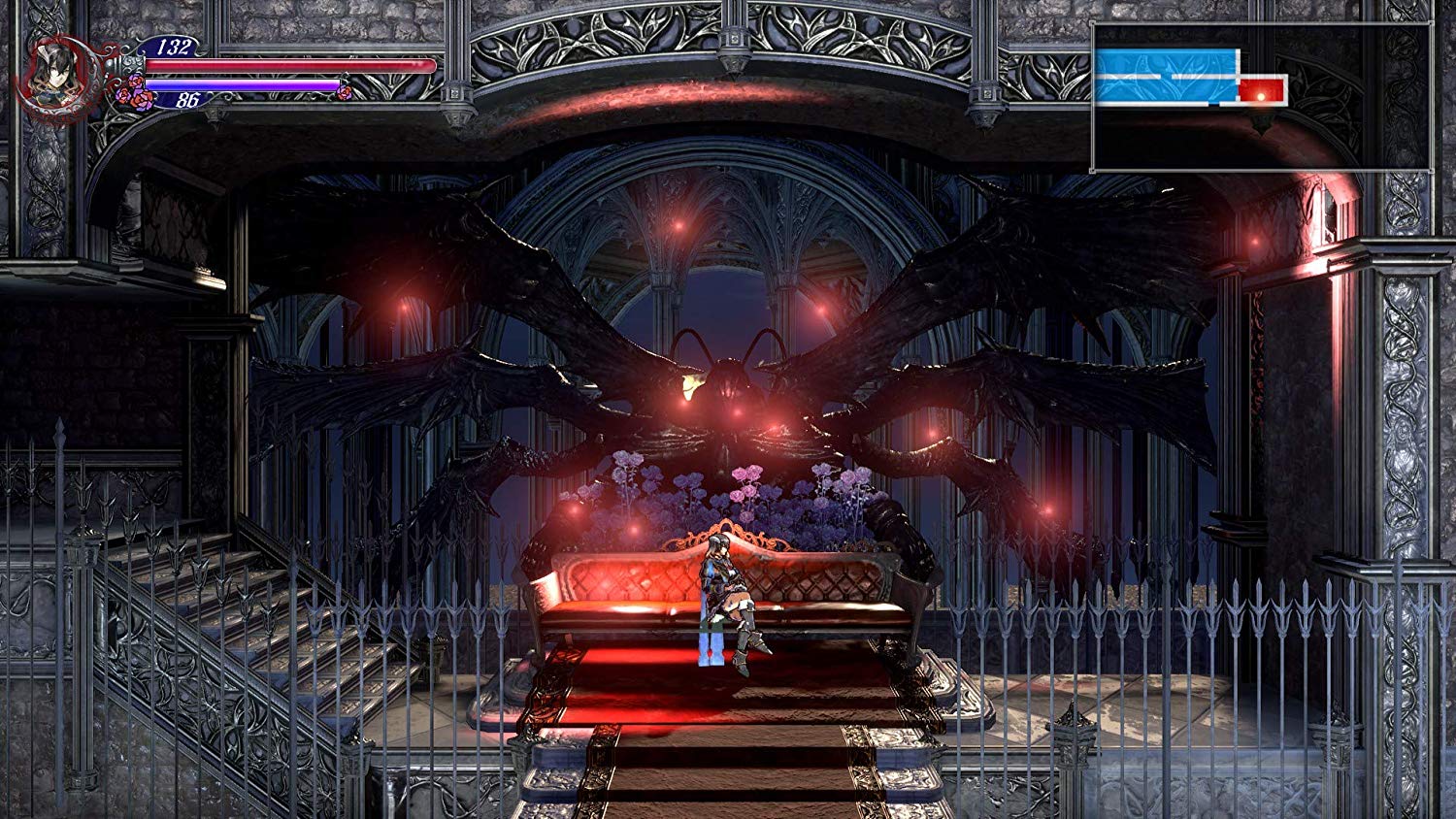
Bloodstained isn't just a great throwback to traditional Castlevania; it's also a great game in its own right, and well worth your time if you yearn for the exploration, action and a tasteful dash of Victorian horror.
Choose your weapon
Miriam, the game's protagonist, is a black-haired young woman, tattooed with various crystal shards, who finds herself aboard a ship besieged by demons. As she traverses the game's level, she finds a variety of weapons, from knives and swords, to kung-fu boots and whips. She'll also discover new magic spells after defeating enemies, from shooting flames to summoning monstrous rats. The goals here are twofold: Destroy every enemy that crosses your path, and explore every last nook and cranny of the ship to fill out your map.
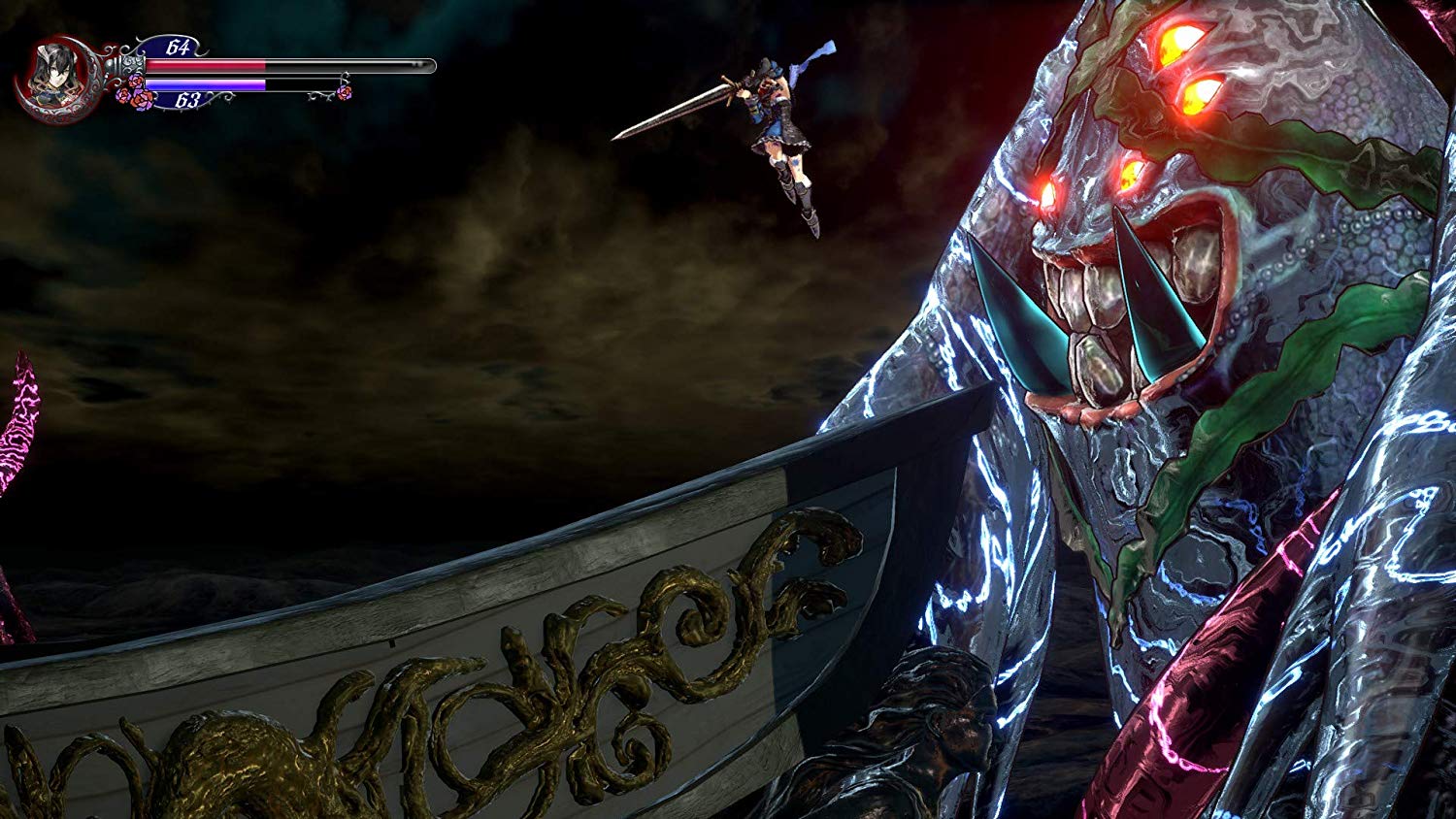
Half the fun is finding out which weapon works best for you, since each one controls quite differently. Knives are fast, but strike at an incredibly short range. Claymores are powerful, but require a slow, overhand swing. Whips are fast, but hit enemies diagonally rather than straight-on. Personally, I found that I liked using overhead swords and axes, since taking down enemies in as few hits as possible turns out to be rather important. Save points and health potions restore your HP, but neither resource is incredibly common, so you'll want to play conservatively, at least until you level up a bit. If you die, you have to reload a save. There are no autosaves, or checkpoints, or automatic retries on boss fights. Old-school fans should feel right at home, but newer players should be aware that the game doesn't hold your hand.
MORE: Here's the Only Way to Protect Your Nintendo Switch Saves
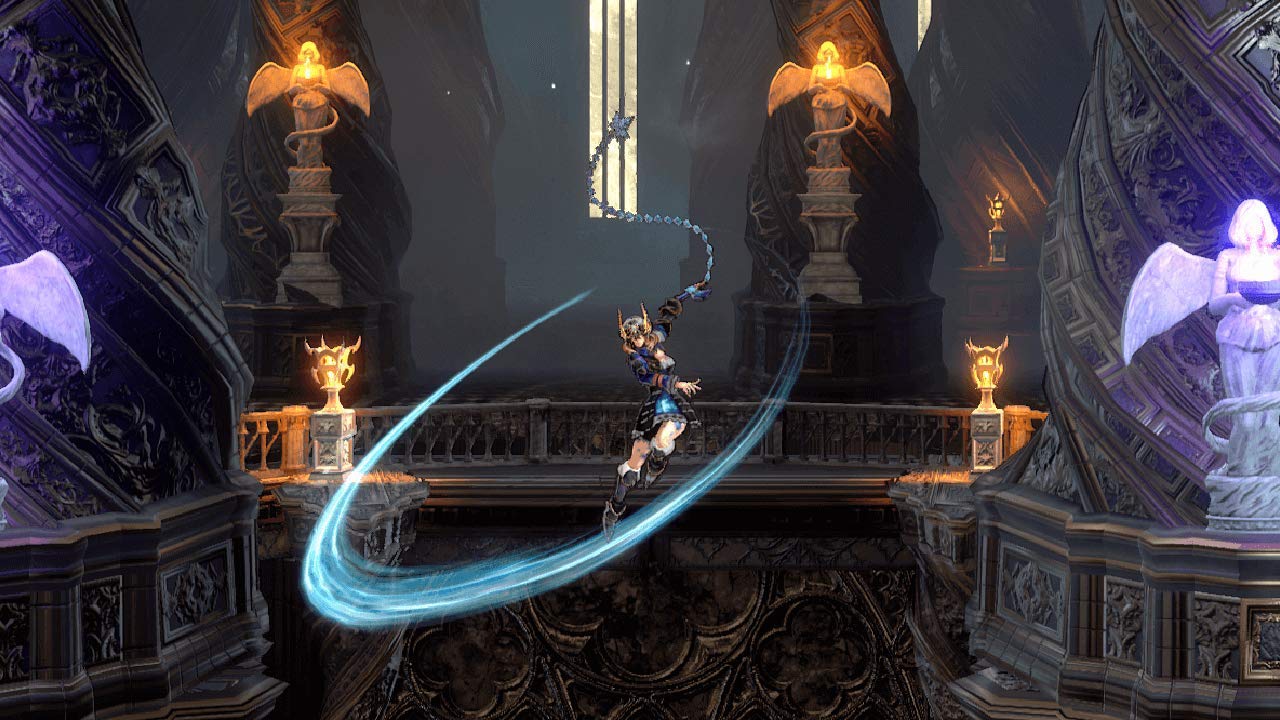
However, the game generally gives you all the tools you need to succeed. If you explore the map thoroughly, you'll find health, magic and weapon upgrades. You'll also level up at a steady clip, particularly once you learn enemy patterns and figure out how to take on big foes without sustaining damage.
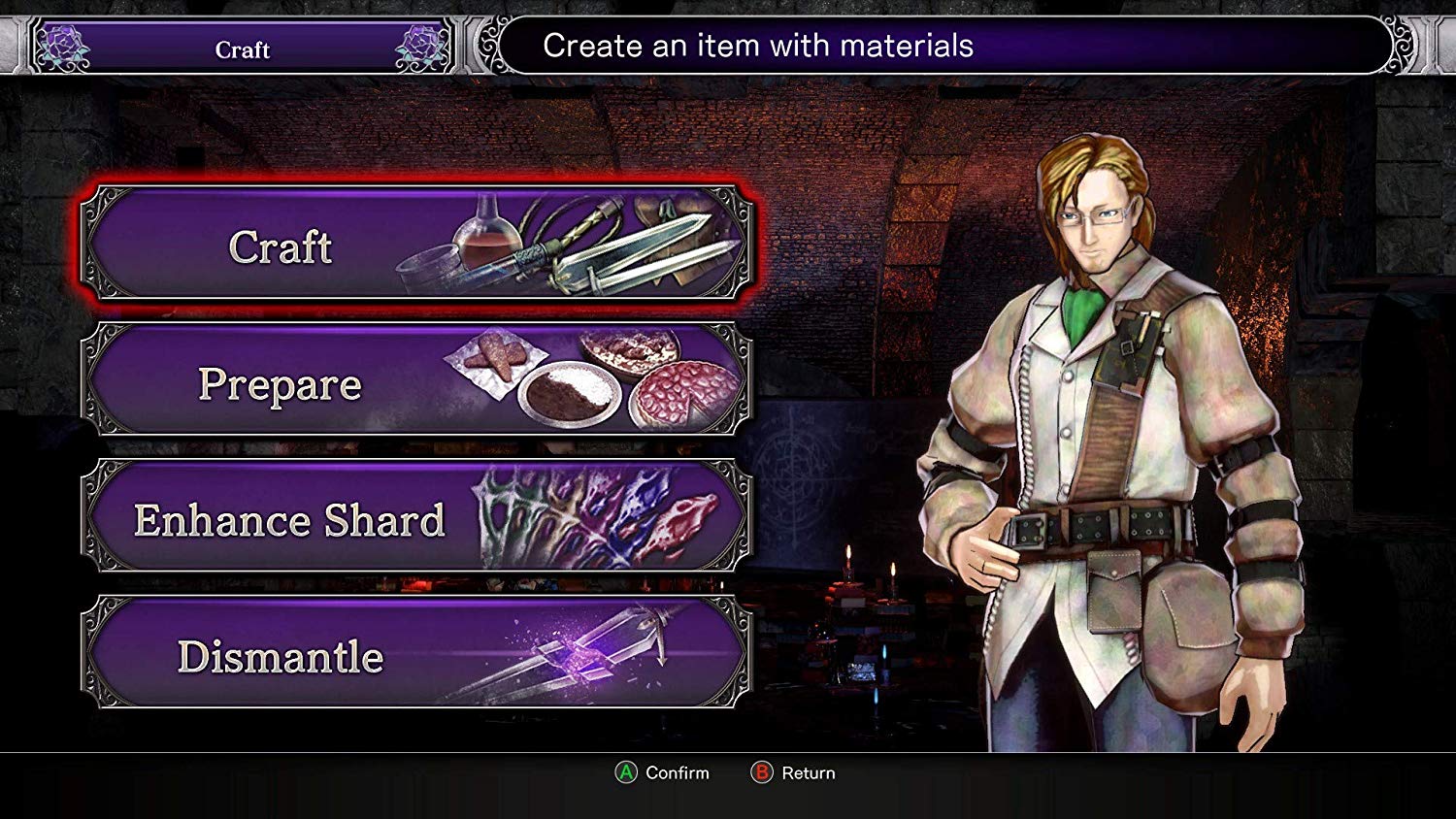
You can also visit your home base to craft new weapons, cook food for stat upgrades, purchase consumable items and take on side quests from a variety of NPCs. However, the game doesn't really force you to do any of these things; you don't even discover the quest-givers until your second trip to the home base. You don't automatically hand over relevant quest items; the game doesn't track which enemies you've killed until the quest officially begins. I imagine how a "newer" Metroidvania might streamline a lot of these tasks, and Bloodstained definitely feels like a game from an earlier era.
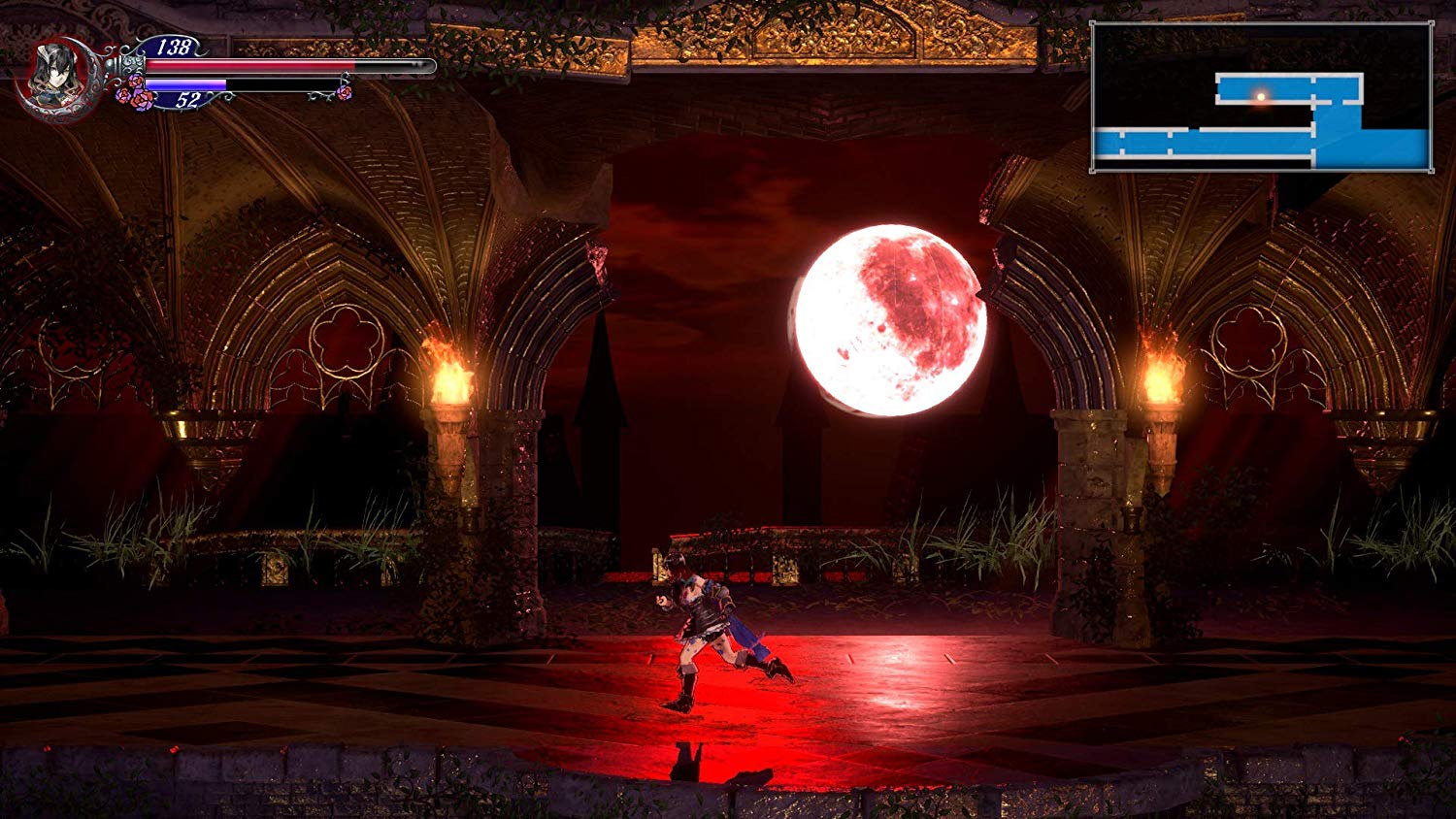
But what makes Bloodstained work is that it's fundamentally about exploring big, beautiful levels and fighting bizarre, colorful enemies, and both of those mechanics work almost perfectly. Miriam is a joy to control, whether she's leaping from platform to platform or swinging a battle-ax into a huge living suit of armor. The levels look gorgeous, from the haunting blood-red skies behind a haunted castle, to the eerie, flooded tunnels underneath an English country town.
MORE: The 12 Best Castlevania Games (and the 3 Worst)
The gameplay loop is nearly perfect: Find a new area, take on a bunch of quests, try some new weapons, level up and fight a boss. Then move on to the next area, or revisit some old areas, if you've earned a new platforming ability. Like its Castlevania predecessors, Bloodstained is a little more satisfying than the average Metroidvania, since you level up as you fight enemies. You're almost guaranteed to get stronger by revisiting past areas, even if you don't find anything new.
Talkative characters
While a lot of Bloodstained feels retro, one aspect feels downright outdated — the long, plodding conversations between characters. While the character design is top-notch — particularly the Victorian-Gothic Miriam and the flamboyant, beautiful Gebel — watching them stand still and exchange sentence after sentence of marginally interesting dialogue was probably not the best way to convey the story.
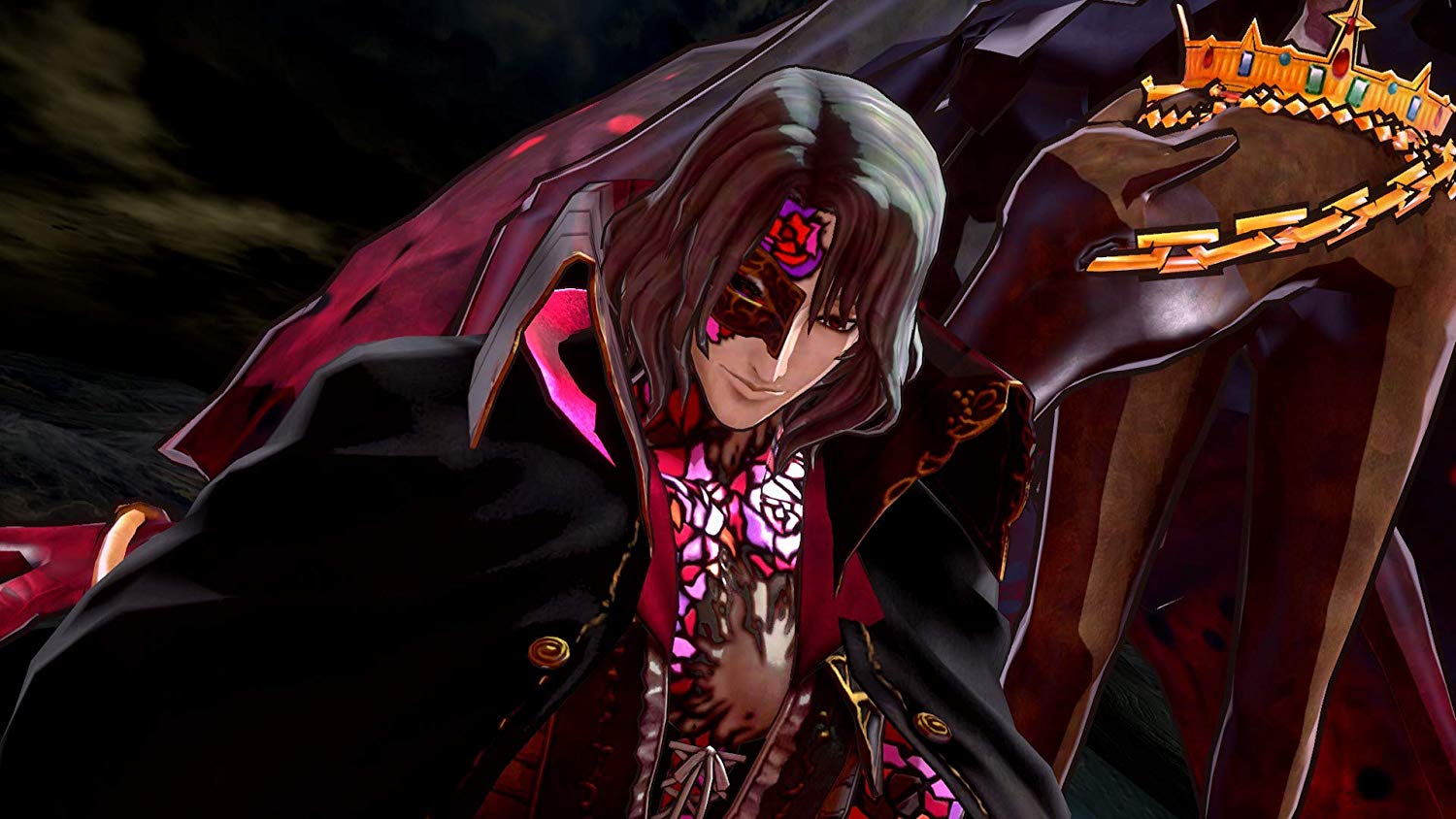
Although, to be fair, the story is convoluted enough to require a lot of exposition. Bloodstained takes place in an alternate-history 19th century where a bunch of alchemists got very mad at the Industrial Revolution (yes, the whole concept) and decided to summon a bunch of demons to vex humanity. A young woman named Miriam was supposed to be sacrificed for this purpose, but fell into an enchanted sleep for an unrelated reason, and by the time she woke up, she didn't need to be sacrificed anymore for… some reason. And also, the Church (possibly the Church of England? It's not clear) is involved, and, and, and.
If Castlevania: Symphony of the Night had much better graphics and a full voice cast, it would play a lot like Bloodstained.
While it's true that the PS1 and DS-era Castlevania games had similar narratives and storytelling styles, Bloodstained probably could have come up with something a little better. What saves the game is that the setting, once you strip away all of the pretense, is fairly interesting, and the characters are charming. I'm not all that invested in Miriam saving the world from demons, but I want to learn more about her relationship with her friend Johannes, her rival Gebel, her mentor Alfred and her Church contact Dominique. If you played the way-better-than-it-had-to-be prequel, Bloodstained: Curse of the Moon, you'll be pleased to know that a lot of themes carry over as well.
MORE: PS5 Rumors: Release Date, Specs, Games and More
It's also worth mentioning that the 2.5D graphics are simply gorgeous, with colorful, varied environments and fluid animations. The voice-acting is solid, particularly Erica Lindbeck's spirited performance as Miriam. But what really steals the show is the soundtrack, which is chock-full of catchy tunes from veteran Castlevania composers like Michiru Yamane. I found myself humming the game's catchy earworms for days, even after I finished the game.
Bottom Line
I've thoroughly enjoyed my time with Bloodstained so far, although I admit that I am the ideal audience for this kind of thing. Four years ago, I backed the game because I missed the Castlevania series, and figured that Igarashi could produce something of similar quality, if given enough time and resources. The game is a slightly prettier version of Symphony of the Night, just without Castlevania's rich continuity — or its complicated baggage.
The biggest criticism I can lobby at Bloodstained is that it doesn't really try to do anything new or exciting with Igarashi's classic formula. But it does execute said classic formula very well. Bloodstained will give you a good 15-20 hours of gorgeous Metroidvania action, presented in a manner we haven't seen since 2008's Castlevania: Order of Ecclesia. Now that the series is (sort of) back, let's hope it doesn't go away again anytime soon.
Credit: Tom's Guide
Marshall Honorof is a senior editor for Tom's Guide, overseeing the site's coverage of gaming hardware and software. He comes from a science writing background, having studied paleomammalogy, biological anthropology, and the history of science and technology. After hours, you can find him practicing taekwondo or doing deep dives on classic sci-fi.

